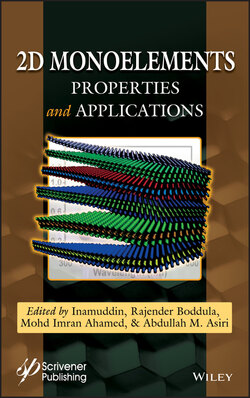Читать книгу 2D Monoelements - Группа авторов - Страница 49
2.3.4 Other Methods
ОглавлениеIn addition to the above three common synthesis methods, there are other methods can also be used to synthesize few- or multilayer antimonene nanosheets, nanoribbons, flakes, or Sb films [37–40]. Few-layer β-antimonene nanosheets were successfully prepared by the solution-phase synthesis method, where SbCl3 solutions as the Sb source were reduced by oleylamine [37]. In this anisotropic growth, both dodecylthiol (DDT) and halide ions played an important role in the formation of β-antimonene. The synthesized β-antimonene nanosheets were single-crystalline with lateral size of 0.5–1.5 μm and thickness of 5–30 nm. Besides, multilayer antimonene nanoribbons were synthesized by the plasma-assisted process, where InSb (001) was selected as the substrates and provided Sb source for the formation of antimonene [38]. During the growth process, the indium at the surface of InSb occurred preferentially the nitridation under the action of N2 plasma, which induced simultaneously the condensation of Sb atoms to form multilayer antimonene. The band gap of multilayer antimonene was opened because of the quantum confinement effect and the turbostratic stacking, then producing the orange light emission (610 nm). Like other 2D materials, antimonene flakes can also be grown through the CVD on SiO2 substrates [39]. Sb powders were used as the Sb source, and Ar gas was the carrier gas. The growth of antimonene flakes began at 600°C and maintained for 10 min. The obtained flakes showed various shapes, including nanoribbon, hexagon, and trapezoid. The antimonene flakes were very stable in air even when heated by a hot plate below 250°C. Moreover, ultrathin Sb films were alternatively grown on the topological insulators (such as Bi2Te2Se and Bi2Se3) by a thermal effusion cell [40, 41].
